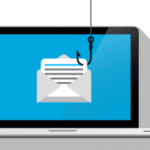In the last few years, cyber threats have gotten more dangerous than just phishing attacks and password breaches. Malvertising is a particularly insidious threat. Cybercriminals use malvertising to hack into systems by embedding malicious software into ads. Business data and financial resources are at risk from this modern threat, which targets desktop and mobile platforms.
The effects of a successful malvertising attack can be devastating. Beyond the immediate damage to databases and systems, the long-term impact can severely tarnish a company’s reputation. If attackers manage to leak employee or customer information, trust can be eroded, leading to financial losses and potential legal repercussions. The fallout from such breaches can be long-lasting, making it crucial to guard against these threats.
Common Platforms for Malvertising
Cybercriminals often create counterfeit websites that closely mimic legitimate ones to deceive users. These fake sites often appear at the top of search results due to minor misspellings of popular URLs. For instance, a small typo like “puuty.org” instead of “putty.org” can lead unsuspecting users to a malicious site. In their haste, users might not notice the error, resulting in unintended malware infections.
Even reputable websites can become unwitting hosts to malvertisements. Hackers cleverly insert harmful code into various types of ads, including banners, display ads, and videos. When users interact with these infected ads, they might download malware or be redirected to a dangerous website. This method is particularly sneaky as it targets users who trust the credibility of the host site, making it harder to detect.
Identifying and Avoiding Malvertisements
Protecting your business from malvertising starts with awareness. Be on the lookout for warning signs such as misspelled URLs, poorly designed web pages, and ads that make unrealistic promises or offer deals that seem too good to be true. These red flags can help you and your employees avoid falling victim to malicious ads.
Best Practices for Cybersecurity
To strengthen your defenses against malvertising, consider implementing the following best practices:
- Select Ad Networks Carefully: Partner with reputable third-party ad networks and thoroughly scan ads for malware before displaying them on your site.
- Regular Software Updates: Keep all software, including web browsers and antivirus programs, up to date to minimize vulnerabilities.
- Employee Training: Educate your staff about the dangers of malvertising and safe online practices.
- Professional Cybersecurity Services: Engage with trusted cybersecurity experts who can recommend and implement robust protective measures tailored to your business needs.
Strengthening Your Business’s Defense
In an era where cyber threats are constantly evolving, safeguarding your business against malvertising is crucial. By recognizing the signs of malvertisements and adopting stringent cybersecurity practices, you can protect your digital assets and maintain the trust of your employees and customers. Strengthening your defenses not only mitigates risks but also ensures peace of mind as you navigate the digital landscape.





